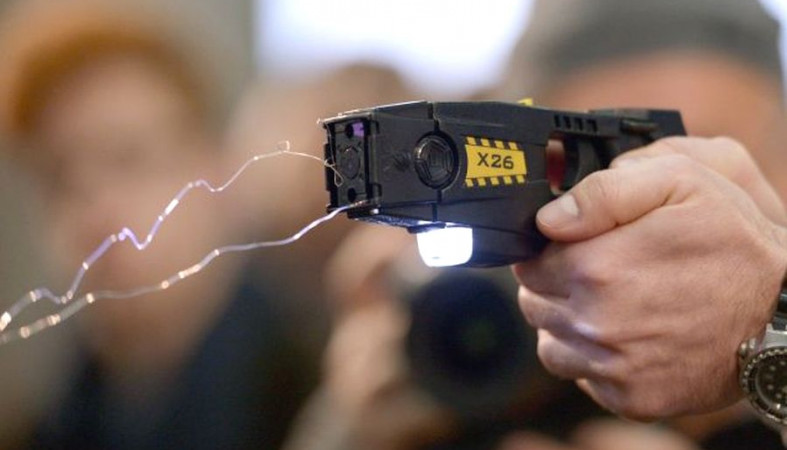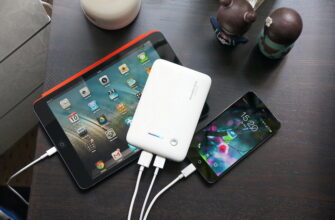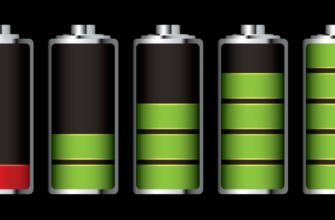It is not necessary to have a black belt in karate to stop an attacker or to escape from dogs. Sometimes, to protect yourself, it is enough to use a stun gun. Today we will tell you how to choose a quality electric weapon and what to look for when buying.

Types of stun guns
An electroshock device (ESHU) is a non-lethal weapon. It is used for self-defense and as an alternative to more dangerous or lethal weapons. The stun gun shocks the attacker with an electric current aimed at disrupting the surface muscle function, and incapacitates him. The time of disorientation of the attacker depends on the type of device and the duration of the discharge.
It often happens that a blow (even if it lasts a couple of seconds) leads to the fact that a person loses control over his movements and experiences a painful shock. He falls to the ground, unable to move or think soberly. Electric shock actually interrupts the brain. The consequences of electric shock usually persist for several minutes – one and a half hours. At the same time, stun guns do not cause serious harm to human health.
Electroshock weapons are divided into two types: contact and remote. For the contact device to work, they need to touch the attacker. The remote stun gun works differently – two small electrodes-needles, attached to the device with copper wires, fly out of it. They pierce clothing, attach to it and shock a person with an electric shock.
Most remote stun guns have a single-shot cartridge. It must be changed after use. The range of remote devices intended for civilians is about 4.5 meters.
Stun guns come in various shapes and types. They are made in the form of small flashlights, pens, mobile phones, batons, etc. According to GOST 1996, these devices are divided into three groups: first, second and third.
Stun guns of the third group
The charging voltage of these devices is less than 45,000 V, and the power is 0.3–1 W. They do not lead to disorientation or immobilization of the enemy, but they perform a psychological and deterrent function. These products are often made in the form of lipsticks, flashlights, cigarette packs, and mobile phones. They can affect the attacker during the warm season (through light clothing).
Advantages
-
Affordable price (about 1,000 rubles);
-
Stun guns are great for protecting against stray dogs – animals are frightened by the electrical discharge, ozone emissions and high-frequency sounds that the device emits.
disadvantages
- Such products cannot disable the enemy, cause paralysis and disorientation.
Stun guns of the second group
Class II electric weapons are the most common commercial weapons. The discharge voltage of these stun guns is 45,000–70,000 V, and the power is less than 2 W. Such devices cause painful shock and immobilization of the attacker for several minutes – this is enough time to escape from the enemy and call for help.
Advantages
-
They affect the attacker through clothing at any time of the year, although in winter their effectiveness decreases;
-
They quickly disorient and neutralize the enemy.
disadvantages
- The attacker will be neutralized only for 1-3 minutes. Rarely lead to loss of consciousness.
Stun guns of the first group
These are the most powerful and effective stun guns designed for civilians. The charge voltage is about 70,000–90,000 V, and the power is 2–3 W. It should be noted that citizens of the Russian Federation cannot use electric weapons with a power of more than 3 W. But law enforcement agencies can use electroshock weapons with a power of up to 10 watts.
Advantages
-
They completely immobilize and disorient the enemy, cause severe pain shock and often lead to loss of consciousness. If the stun gun was used on vulnerable parts of the body (neck or groin area), the attacker may shut down for 10-30 minutes or more.
-
They work at any time of the year, no matter how much the attacker is wearing.
disadvantages
- Cost (about 2,000-5,000 rubles). The first class stun guns are more expensive than the second and third class stun guns.
The size of stun guns

Electric weapons can be of various sizes and shapes, but their effectiveness does not depend on the size. Small devices in the form of mobile phones or flashlights may well paralyze the enemy and render him unconscious. At the same time, they are placed in a handbag, pocket or woman's palm, without arousing suspicion.
Remote ESDs with a cartridge are large and heavy in comparison with contact ones, but they can also be hidden in a bag or an inner pocket of a jacket.
The largest devices are batons. Their length is about 30-50 cm. Such models allow you to influence the enemy, even if at a short distance. Since the constant wearing of electric shock batons is not very convenient, manufacturers offer several alternative options. On sale you can find telescopic devices that, if necessary, turn from a compact flashlight into a baton.
Large and heavy ESDs are most commonly used by law enforcement officials, but they are also suitable for home protection.
Nutrition
Accumulators or batteries are used as a power source for ESD. Each of them have their own advantages and disadvantages.
Stun guns with rechargeable batteries are designed for repeated use. They withstand about 200-300 discharges before sitting down and remain functional for a month. These stun guns should be recharged regularly – even if they are rarely used or not used at all. Charging should take about two hours (every month) if the ESD has not been used, and 5–6 hours if the stun gun is discharged.
Batteries are a good option for those who are not going to use ESD often. Battery-powered electroshock weapons do not need to be recharged, and the battery charge should last for 15–20 discharges. However, keep in mind that at the most inopportune moment, the batteries can run out, and weak ESU sparks will only anger the enemy.
Top manufacturers
Citizens of the Russian Federation can use electric shock devices with a power of less than 3 W and a discharge voltage of no more than 90,000 V. In this case, the stun gun must have a technical passport and a quality certificate. The certificate should be carried along with the ESHU – non-certified devices can be seized by law enforcement officials.
The following manufacturers have proven themselves well in the Russian market:
-
JSC 'OBERON-ALFA';
-
Company 'Mart';
-
TANDER;
-
JSC “Research Institute of Steel”;
-
Karakurt.
It is important that the stun gun is of domestic production. On the territory of the Russian Federation, the use of devices from foreign brands is not allowed, even if their characteristics meet the above requirements.
Attention! This material is the subjective opinion of the authors of the project and is not a purchase guide.









